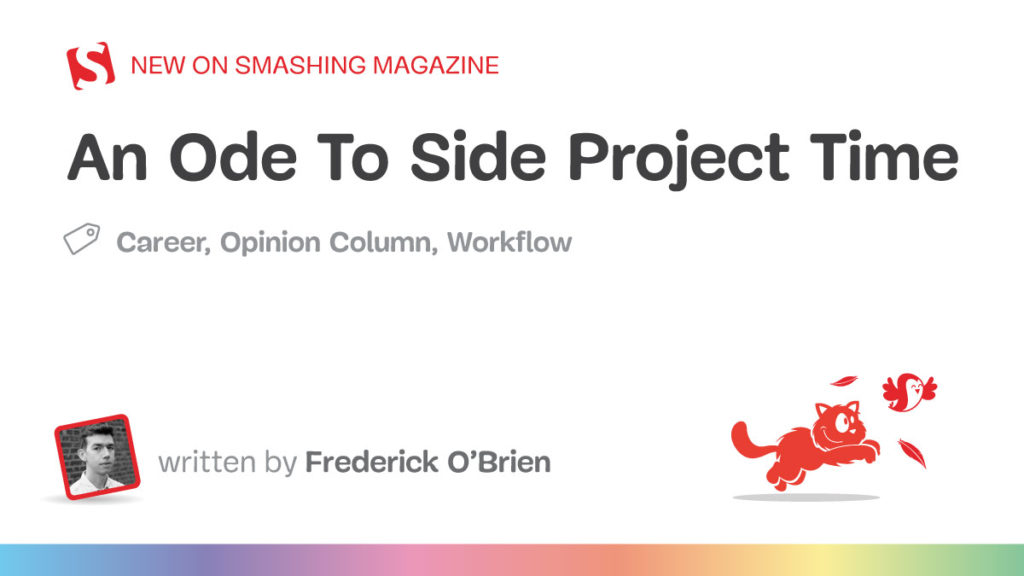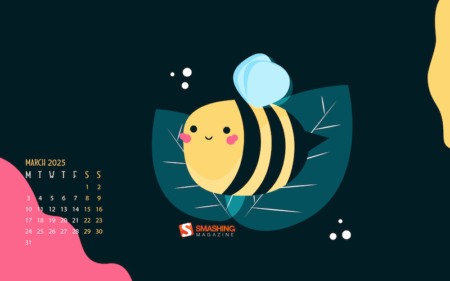There seemed to be a hot minute when the tech industry understood the value of idle tinkering and made a point of providing ‘side project time’ as an explicit working perk. The concept endures — I’m lucky enough to work somewhere that has it — but it seems to have been outpaced in recent years by the endless charge toward efficiency.
This seems a shame. We can’t optimize our way to quality solutions and original ideas. To try is a self-defeating fantasy. The value of side project time is hard to overstate, and more workplaces should not just provide it but actively encourage it.
Here’s why.
What Is Side Project Time?
Side project time pops up under different names. At the Guardian, it’s 10% time, for example. Whatever the name, it amounts to the same thing: dedicated space and time during working hours for people to work on pet projects, independent learning, and personal development.
Google founders Larry Page and Sergey Brin famously highlighted the practice as part of the company’s initial public offering in 2004, writing:
“We encourage our employees, in addition to their regular projects, to spend 20% of their time working on what they think will most benefit Google. This empowers them to be more creative and innovative. Many of our significant advances have happened in this manner. For example, AdSense for content and Google News were both prototyped in “20% time.” Most risky projects fizzle, often teaching us something. Others succeed and become attractive businesses.”
— Larry Page and Sergey Brin
The extent to which Google still supports the practice 20 years on is hazy, and though other tech big hitters talk a good game, it doesn’t seem terribly widespread. The concept threatened to become mainstream for a while but has receded.
The Ode
There are countless benefits to side project time, both on an individual and corporate level. Whether your priorities are personal growth or making lines, it ought to be on your radar.
Individuals
On an individual level, side project time frees up people to explore ideas and concepts that interest them. This is good in itself. We all, of course, hope to nurture existing skills and develop new ones in our day-to-day work. Sometimes day to day work provides that. Sometimes it doesn’t. In either case, side project time opens up new avenues for exploration.
It is also a space in which the waters can clear. I’ve previously written about the lessons of zen philosophy as they relate to pet project maintenance, with a major aspect being the value of not doing. Getting things done isn’t always the same as making things better.
The fog of constant activity — or productivity — can actually keep us from seeing better solutions to problems. Side project time makes for clearer minds to take back with us into the day-to-day grind.
Dedicated side project time facilitates personal growth, exploration, and learning. This is obviously good for the individual, but for the project too, because where are the benefits going to be felt?
Companies
There are a couple of examples of similar company outlooks I’d like to highlight. One is Pixar’s philosophy — as outlined by co-founder Ed Catmull — of protecting ‘ugly babies’, i.e. rough, unformed ideas:
“A new thing is hard to define; it’s not attractive, and it requires protection. When I was a researcher at DARPA, I had protection for what was ill-defined. Every new idea in any field needs protection. Pixar is set up to protect our director’s ugly baby.”
— Ed Catmull
He goes on to point out that they must eventually stand on their own two feet if they are to step out of the sandbox, but that formative time is vital to their development.
The mention of DARPA (the Defense Advanced Research Projects Agency), a research and development agency, highlights this outlook, with Bell Labs being one of its shining examples. Its work has received ten Nobel Prizes and five Turing Awards over the years.
As journalist Jon Gertner summarised in The Idea Factory: Bell Labs and the Great Age of American Innovation:
“It is now received wisdom that innovation and competitiveness are closely linked. But Bell Labs’ history demonstrates that the truth is actually far more complicated…creative environments that foster a rich exchange of ideas are far more important in eliciting new insights than are the forces of competition.”
— Jon Gertner
It’s a long-term outlook. One Bell employee recalled: “When I first came, there was the philosophy: look, what you’re doing might not be important for ten years or twenty years, but that’s fine, we’ll be there then.”
The cynic might say side project time is research and development for companies without the budget allocation. Even if there is some truth to that, I think the former speaks to a more entwined culture. It’s not innovation over here with these people and business as usual over there with those other people.
Side project time is also a cultural statement: you and your interests are valuable here. It encourages autonomy and innovation. If we only did OKRs with proven value, then original thinking would inevitably fade away.
And let’s be frank: even in purely Machiavellian terms, it benefits employers. You’ll be rewarded with happier, more knowledgeable employees and higher retention. You may even wind up with a surprising new product.
Give It A Spin
Side project time is a slow burner but an invaluable thing to cultivate. Any readers in a position to try side project time will reap the benefits in time.
Some of the best things in life come from idle tinkering. Let people do their thing. Give their ideas space to grow, and they will. And they might just be brilliant.
Further Reading
- “Side Project Programs Can Have Major Benefits for Employers” by Tammy Xu
- “What made Bell Labs special?” by Andrew Gelman (PDF)
- “Why Bell Labs Was So Important To Innovation In The 20th Century,” Forbes
- “Google’s ’20% rule’ shows exactly how much time you should spend learning new skills—and why it works,” Dorie Clark
- Creativity, Inc. by Ed Catmull
Source: Read MoreÂ




